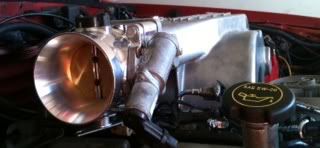A friend told me that he had seen a small digital volt meter that you install in the wiring of the throttle position switch so you do not have to push pins through the wires to be able to connect a volt meter. I have looked, but I have not been able to find one. Anyone know about this tool ?
Announcement
Collapse
No announcement yet.
Meter for Throttle Positioning Switch
Collapse
X
-
Go in through the back of the plug at the gasket. You can get a probe in there or I use a paperclip and an aligator clip to get in there.
When I built my harness from scratch I used 3pin Deutsch plugs for the TPS. Then built a 3pin harness to between the TPS and Harness to give me a pin out. Since I used mostly Deutsch plugs I did this with 2pin, 3pin, 4pin, 6pin and 8pin setups. Makes diag real easy.Fuck you. We're going to Costco.
Comment

Comment